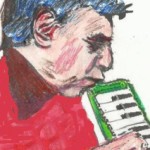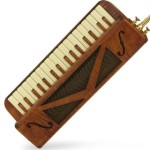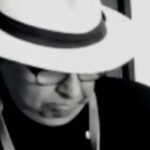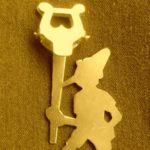Sonny Boy Williamson Apparently Covering the Outlet Slots on His Harmonica
Tagged: Blues melodica, Harmonica, Melodica Design
- This topic has 29 replies, 7 voices, and was last updated 7 years, 2 months ago by
 Quetscher.
Quetscher.
-
AuthorPosts
-
February 6, 2017 at 7:10 pm #8194
 jazzman1945Participant
jazzman1945ParticipantYes, I like this artist very much; and I had once tried on saxophone his sound production . The idea exactly from here.
February 7, 2017 at 7:14 pm #8203 QuetscherParticipant
QuetscherParticipantHello Jazzman and all the others,
I really like the Archie Shepp tune and at the same time I’m asking myself if it isn’t too much of a burden for the melodica to be compared to the saxophone or even to a clarinet. There is no way to directly influence the reeds because even in comparison to a harmonica the way between the lips (mouth cavern) and the reeds is way too long, so the reeds can hardly transmit the sound you form with your mouth; only when you adopt real hard measures such as singing into the instrument or growling you can really change the sound – and I’m not even quite sure if this hasn’t something to to with the resonance of the air chamber or some other part of the melodica instead of the reeds…. Of course this does not mean that there can nothing be done to change colours – but in a way that is different from saxophone playing. What you can do first is influence the output – that’s what Lowboy does masterfully when he covers and uncovers his Hohner or when he uses Doppler effects etc. And second you can “add” sound by producing certain noises and sounds at the input by humming, whistling, singing, doing something like mouth percussion, clicking with the keyboard, and by using the sound possibilities when you don’t blow directly into the mouthpiece but try to let some air slip or try to “overblow”.Nevertheless the Archie Shepp tune is a great inspiration to try out several techniques even in an unconventional way – and so I recorded myself while practicing just to try out a maximum of possibilities in short time…
February 7, 2017 at 7:36 pm #8205 QuetscherParticipant
QuetscherParticipantHello Jazzman and all the others,
I really like the Archie Shepp tune and at the same time I’m asking myself if it isn’t too much of a burden for the melodica to be compared to the saxophone or even to a clarinet. There is no way to directly influence the reeds because even in comparison to a harmonica the way between the lips (mouth cavern) and the reeds is way too long, so the reeds can hardly transmit the sound you form with your mouth; only when you adopt real hard measures such as singing into the instrument or growling you can really change the sound – and I’m not even quite sure if this hasn’t something to to with the resonance of the air chamber or some other part of the melodica instead of the reeds…. Of course this does not mean that there can nothing be done to change colours – but in a way that is different from saxophone playing. What you can do first is influence the output – that’s what Lowboy does masterfully when he covers and uncovers his Hohner or when he uses Doppler effects etc. And second you can “add” sound by producing certain noises and sounds at the input by humming, whistling, singing, doing something like mouth percussion, clicking with the keyboard, and by using the sound possibilities when you don’t blow directly into the mouthpiece but try to let some air slip or try to “overblow”.
Nevertheless the Archie Shepp tune is a great inspiration to try out several techniques even in an unconventional way – and so I recorded myself while practicing just to try out a maximum of possibilities in short time…February 7, 2017 at 7:37 pm #8206 jazzman1945Participant
jazzman1945ParticipantBravo, Quetscher! I think you can try this technique:
Funky saxFebruary 7, 2017 at 7:42 pm #8207 QuetscherParticipant
QuetscherParticipantThanks a lot, Jazzman! Yes, I’ll try that one, sounds interesting.
February 7, 2017 at 7:42 pm #8208 LowboyParticipant
LowboyParticipantHi Quetscher.
I went to Soundcloud and heard these recordings by you. Unbelievable. I would say near groundbreaking in the real application of voice and mouth modulation on a melodica. Tone quality is most listenable.
I agree with the key points in your post as well (though you have also just demonstrated in these recordings that there is room for expressiveness based on use of the mouth and breath and vocalizations).
Two questions: What melodica? What was the type or shape of the mouthpiece?
Lowboy
February 7, 2017 at 7:56 pm #8210 QuetscherParticipant
QuetscherParticipantThanks a lot, Lowboy! I used my Clavietta Labourdette for better bendings and a mouthpiece that is shaped a little like a small clarinet mouthpiece. You can see it on one of these photos:
February 7, 2017 at 9:34 pm #8211 Melodica-MeParticipant
Melodica-MeParticipantAwesome technique Quetscher. I really like your Clavietta Labourdette a lot.
Melodica-MeFebruary 8, 2017 at 6:02 am #8212 QuetscherParticipant
QuetscherParticipantThanks a lot, Melodica-me! I also like my Labourdette, and I really hope that the custom-made instrument that I will get soon (and that is based on the Labourdette) will have a similar quality…
Apart from that I will do some other recording during the next days where I try to integrate some of these playing techniques into a regular song.
February 8, 2017 at 8:12 am #8213 jazzman1945Participant
jazzman1945ParticipantHi, Quetsher! I am interested to buy Labourdette; where it is possible to order it?
February 8, 2017 at 8:38 am #8214 QuetscherParticipant
QuetscherParticipantHi Jazzman,
I’m very sorry but this is a prototype that I own. Monsieur Labourdette designed it an then decided to quit this project… So apart from mine there doesn’t exist any other Clavietta Labourdette…
Maybe by the time I get my own Clavietta I will sell the Labourdette, but I’m not entirely sure. If I do I will inform you all.
February 8, 2017 at 12:02 pm #8216 LowboyParticipant
LowboyParticipantHi Quetscher,
This clarinet-type mouthpiece is what I have been dreaming about along with sax- and oboe-type mouth pieces. I have yet to experiment with any of these mouthpieces primarily because I must play with a short tube and so I need a mouthpiece that will not slide out of my mouth. The only solution I have come up with is to put notches in these mouth pieces so I can hold them between my teeth. Hopefully soon I will find a woodwind shop and an expert who can help me find and modify a mouthpiece.
Regards,
Lowboy
February 8, 2017 at 4:01 pm #8219 DarenKeymaster
DarenKeymasterThis is lovely playing Quetscher! I was lucky enough to try out the Labourdette prototype in its early stages. I remember the reeds were slightly bigger than the Clavietta, and the angle of them shifted 90 degrees for a more efficient airflow.
February 8, 2017 at 5:16 pm #8221 Alan BrintonParticipant
Alan BrintonParticipantIt is hard to judge how much is the instrument and how much is Quetscher’s incredible playing. If only there were someplace to buy that.
February 8, 2017 at 8:21 pm #8222 QuetscherParticipant
QuetscherParticipantThanks for your kind words, Alan! Maybe there will be an instrument like that to buy one day – like I said, we are planning on building a little series of Claviettas based on the Labourdette…
And also thank you, Daren. I’ve seen the picture of the Labourdette some time ago on Facebook. In fact these are Binci Vibrandoneon reeds mounted in a 90 degrees angle, just the same as in the Accordinas.
@Lowboy: I hope I wasn’t spreading fake news when I talked about a Clarinet style mouthpiece; I simply meant the form of the mouthpiece, not the function – there is no reed or anything…When speaking of the playing techniques I used I would strongly recommend a fixed mouthpiece maybe with a pipe instead of a tube, because you need to sort of wander along the edge of the mouthpiece with your mouth to create different sorts of noises…
-
AuthorPosts
- You must be logged in to reply to this topic.
